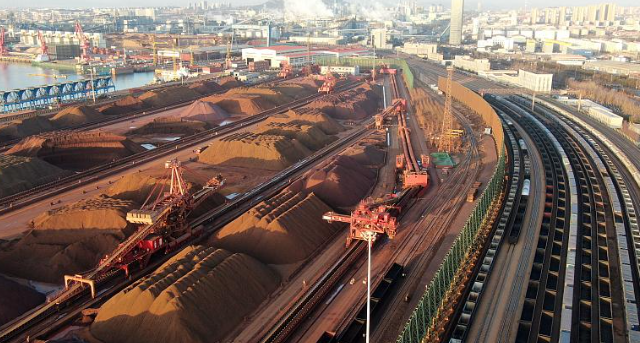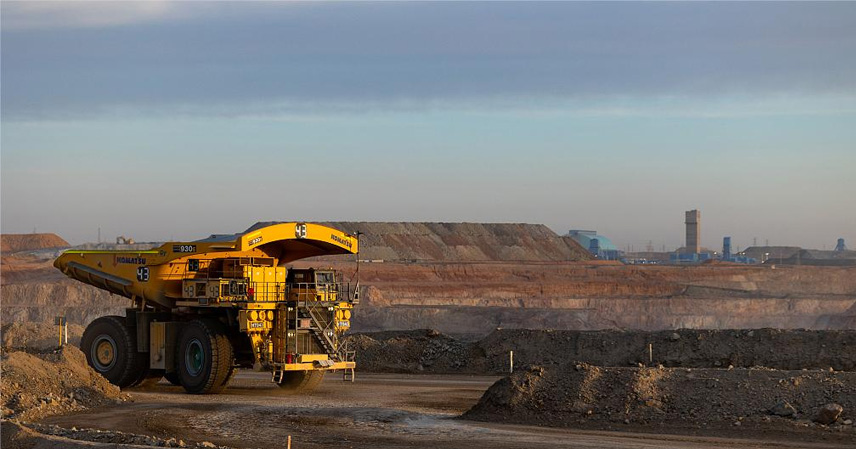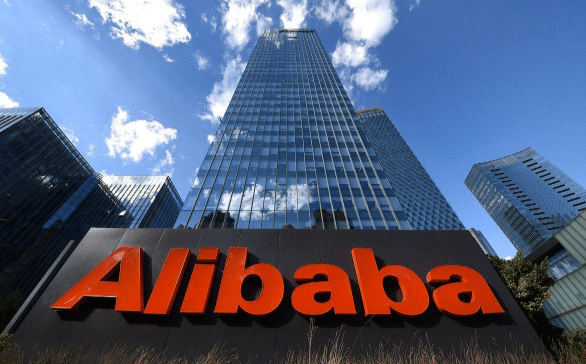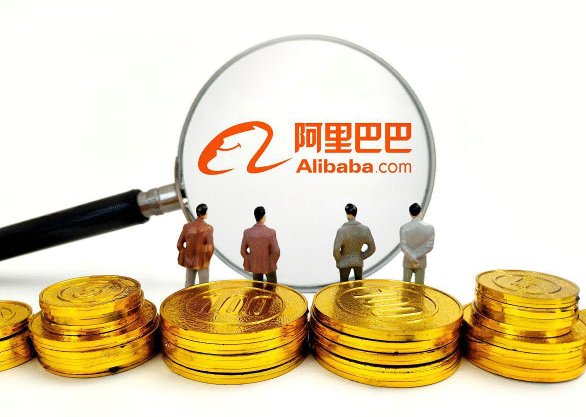For years, China has been the world’s largest buyer of iron ore — yet it often paid premium prices, much like a tourist forced to buy overpriced bottled water at a scenic spot.
Now, that dynamic is shifting. Recently, China Mineral Resources Group (CMRG) officially notified all domestic steel mills and traders to suspend all U.S. dollar–denominated purchases of seaborne iron ore from BHP, one of the world’s three mining giants.
The order was not only unexpected — it was a strategic shockwave.
All new contracts are frozen, and even shipments already at sea will not be received if they are settled in dollars.

The only exception: spot cargoes already at Chinese ports, but only if sellers agree to renminbi (RMB) settlement.
From Fragmented Buyers to a Unified Force
China’s steel industry has long suffered in global iron ore negotiations. Since 2004, when China first joined the annual price talks, it found the game stacked against it.
Back then, dozens of Chinese steel mills acted independently — each negotiating separately, unaware of others’ deals. Meanwhile, the sellers — BHP, Rio Tinto, and Vale — operated as a united front.
They used information asymmetry and “divide-and-conquer” tactics: one day offering a price to one buyer, the next day using it to pressure another.
As a result, prices kept rising, and China — despite being the largest and most stable customer — had no say in price formation.

Most of the profits flowed to mining giants and Wall Street speculators, while Chinese steelmakers struggled with razor-thin margins.
In 2022, that began to change with the establishment of China Mineral Resources Group, a central entity designed to unify China’s massive iron ore demand and represent the nation as a single negotiating power.
Today, one entity representing over 70% of global seaborne iron ore imports now faces off against the “Big Three.”
The balance of power has shifted — China is no longer merely a price taker but a strategic price negotiator.
From Dependence to Diversification
But having bargaining power means little unless you can walk away from the table.
China’s previous vulnerability came from its heavy dependence on a few suppliers, mainly Australia.
Whenever political tensions rose, iron ore prices mysteriously surged — offsetting losses from other trade restrictions. Beijing often found itself paying more simply because there was no viable alternative.

That “no choice” era is ending.
The key lies in Simandou, a massive high-grade iron ore deposit in Guinea, West Africa. With a projected output exceeding 100 million tons annually, and ore purity above 65% Fe, it’s one of the richest untapped resources on Earth.
As development accelerates, China’s reliance on Australian ore weakens. The message to global suppliers becomes clear: “We don’t have to play by your rules anymore.”
This new supply base gives Beijing the material foundation to back its bold move — turning a polite “request” into a firm “ultimatum.”
Targeting the Real Power: The U.S. Dollar
Beyond supply and organization, China’s latest move strikes at the core of global commodity pricing — the dollar settlement system.
In the past, China was “cut twice”: first by price manipulation from mining monopolies, then by currency fluctuation driven by the U.S. Federal Reserve.
Even when ore prices stayed the same, Fed rate hikes could make the dollar stronger, instantly raising China’s import costs in RMB terms.

This meant that a crucial part of China’s industrial chain was effectively subject to another country’s monetary policy — an unacceptable vulnerability for an economy of China’s scale.
By rejecting dollar-denominated transactions, CMRG directly challenges this structure. The rule is simple:
No more U.S. dollar settlements.
If a seller wants to keep doing business with China, they must accept RMB pricing — linking their financial ecosystem to China’s instead of the U.S.
This is more than a trade adjustment; it’s a geopolitical currency move.
The Global Ripple Effect
Iron ore is one of the world’s most traded commodities. If it can be successfully priced in RMB, it opens a door for other key resources — oil, gas, soybeans — to follow.
Countries like Russia and Brazil, already wary of dollar hegemony, may welcome this shift.
For them, using the RMB offers diversification and protection from dollar volatility.

Australia, however, faces a potential economic shock. Iron ore exports form the backbone of its economy, and China is virtually its only large-scale buyer. Losing pricing control could severely hit its revenues and financial stability.
In the short term, China might experience some logistical disruptions. Yet its large port inventories and domestic scrap recycling capacity will cushion the impact.
In the long run, the payoff is monumental: freedom from both price and currency “choke points”, saving billions annually in import costs.
Conclusion
This is not just a trade maneuver — it’s a structural power shift.
For two decades, China played by rules written by others — rules that leveraged financial dominance and market monopolies. Now, it is rewriting those rules through organization, diversification, and monetary strategy.
When you’re weak, every move feels like a mistake.
When you’re strong, even your silence becomes a statement.
China’s message is clear:
The era of being dictated to is over.
References:
- China Mineral Resources Group official statement (2025)
- Australian Bureau of Statistics, Trade Data 2025
- IMF Commodity Outlook 2025



